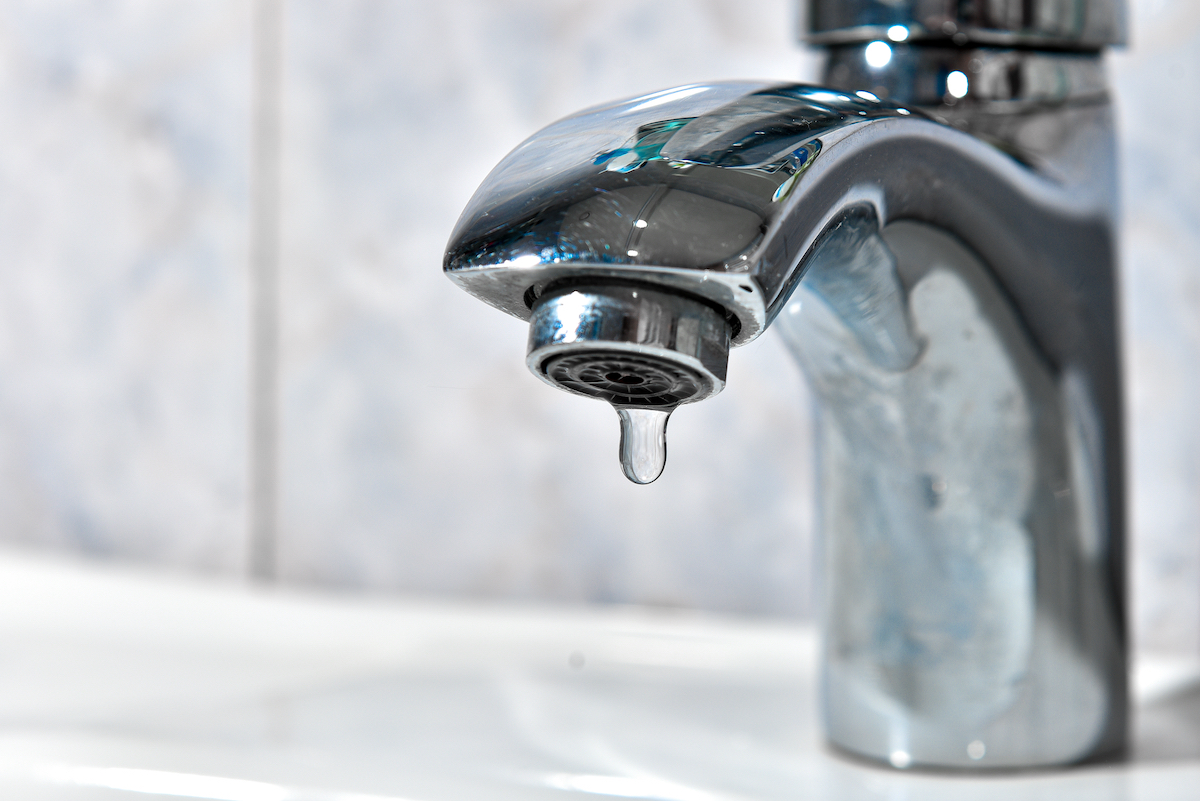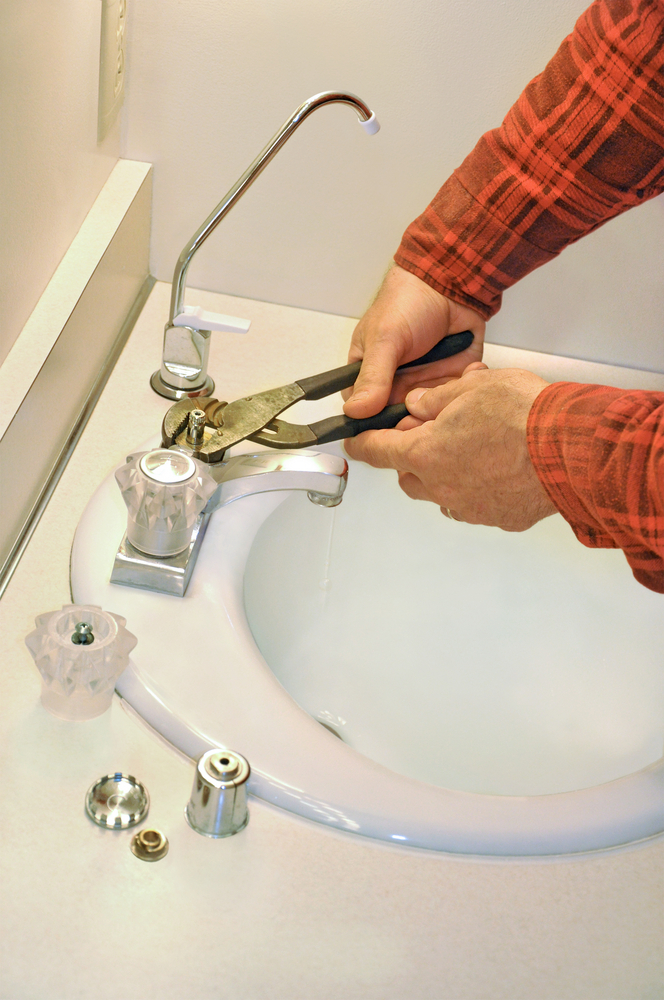Why It's Important to Fix a Broken Faucet
Why It's Important to Fix a Broken Faucet
Blog Article
How do you really feel when it comes to Why Are My Faucets Dripping (And Can I Fix It Myself)??

Trickling faucets might appear like a small hassle, yet their influence goes beyond just the nuisance of the audio. From drainage to incurring unnecessary financial costs and health and wellness dangers, neglecting a trickling faucet can bring about different repercussions. In this write-up, we'll delve into why it's essential to address this typical home problem immediately and properly.
Wastefulness of Water
Ecological Impact
Dripping taps add significantly to water wastefulness. According to the Epa (EPA), a solitary tap leaking at one drip per secondly can squander more than 3,000 gallons of water annually. This not just pressures water sources yet additionally impacts environments and wild animals based on them.
Step-by-Step Guide to Repairing a Dripping Faucet
Devices Needed
Before trying to deal with a trickling faucet, gather the necessary devices, consisting of an adjustable wrench, screwdrivers, replacement components (such as washing machines or cartridges), and plumber's tape.
Typical Tap Issues and Their Solutions
Recognize the kind of tap and the certain problem causing the drip. Usual issues include damaged washers, rusty shutoff seats, or defective O-rings. Refer to supplier directions or on the internet tutorials for step-by-step advice on repair services.
Financial Costs
Raised Water Expenses
Beyond the ecological effect, trickling faucets can inflate water costs significantly. The accumulated wastage over time translates into greater energy costs, which could have been avoided with prompt repair services.
Prospective Home Damage
In addition, long term leaking can lead to harm to components and surface areas surrounding the tap. Water accumulation can create staining, deterioration, and even structural concerns if left unattended, leading to added repair work prices.
Health Worries
Mold and Mold Development
The constant existence of dampness from a dripping tap develops an excellent setting for mold and mildew and mildew growth. These fungi not only compromise indoor air high quality but likewise present health dangers, especially for individuals with respiratory system problems or allergic reactions.
Waterborne Diseases
Stationary water in dripping taps can end up being a breeding place for bacteria and various other pathogens, boosting the risk of waterborne illness. Contaminants such as Legionella germs grow in stagnant water, possibly leading to major health problems when ingested or inhaled.
DIY vs. Specialist Repair work
Advantages and disadvantages of Do It Yourself Repair
While some might try to fix a trickling tap themselves, do it yourself repair work come with their own collection of challenges. Without appropriate understanding and devices, do it yourself efforts can exacerbate the issue or cause incomplete repairs, prolonging the issue.
Advantages of Hiring an Expert Plumber
Hiring a professional plumber guarantees that the underlying cause of the leaking tap is addressed effectively. Plumbings possess the knowledge and equipment to diagnose and fix faucet concerns efficiently, conserving time and minimizing the danger of more damages.
Environmental Obligation
Individual Contribution to Conservation
Taking responsibility for fixing dripping taps straightens with broader initiatives toward water preservation and environmental sustainability. Every person's activities jointly make a substantial impact on protecting valuable resources.
Lasting Living Practices
By focusing on prompt repair work and taking on water-saving behaviors, people add to sustainable living techniques that benefit both present and future generations.
Preventive Measures
Routine Upkeep Tips
To prevent dripping taps, carry out regular upkeep such as cleaning up aerators, evaluating for leakages, and changing worn-out parts promptly. Furthermore, think about mounting water-saving tools or upgrading to much more reliable fixtures.
Value of Prompt Repairs
Addressing dripping faucets as soon as they're discovered protects against more water wastefulness and prospective damages, ultimately conserving both water and money in the long run.
Influence On Building Worth
Perception of Well-Maintained Residential Property
Maintaining a property in good condition, consisting of resolving maintenance issues like trickling taps, enhances its viewed worth and value amongst possible buyers or tenants.
Influence on Resale Worth
Residences with well-maintained plumbing components, including faucets, command higher resale values in the property market. Attending to trickling faucets can contribute to a favorable perception during residential property examinations and settlements.
Conclusion
Dealing with a leaking faucet exceeds mere benefit; it's a necessary step towards saving water, decreasing economic costs, and securing health and residential property. Whether through DIY fixings or professional aid, doing something about it to fix trickling faucets is a small yet impactful method to advertise accountable stewardship of resources and add to a much healthier, much more lasting future.
How to Fix a Leaky Faucet: Step-by-Step Repair Guide
A leaky faucet may seem like a simple annoyance, but if it's not fixed promptly, that leak could cost hundreds to potentially thousands. From water damage to mold, mildew, and high water bills, even a tiny leak can be catastrophic if left unattended. Damage like this can even affect the overall value of your home, so it's important to take the right approach for leaky faucet repair. You may need the help of a plumber in some cases, but we've got a few tips you can try on how to fix a leaky faucet before calling the pros.
Four Faucet Types
When you're learning how to fix a leaky faucet, the first step is knowing what kind of faucet you're working with! There are four common types.
Cartridge Faucets
Cartridge faucets come in one- or two-handled varieties. In one-handled cartridge faucets, hot and cold water combines in a single cartridge. In the two-handled versions, hot and cold water are controlled separately and mixed in the faucet.
Ball Faucets
Ball faucets have a single lever you push up and down to adjust the pressure and rotate to change the temperature. A slotted metal ball controls the amount of water allowed into the spout.
Compression Washer Faucets
They're the oldest type of faucet, but they're still used in many homes — especially older ones. Compression faucets have two separate handles that, when turned, raise or lower the washer that seals a water valve. This valve stops water from flowing through the faucet when it is turned off.
Disc Faucets
Disc faucets rarely need to be repaired due to their maintenance-free design. The water flow is controlled by two discs — the upper one raises and lowers against a fixed lower disc, creating a watertight seal. If your disc faucet starts leaking, you may need to replace the seals or clean residue buildup from the inlets.
Fixing a Leaky Faucet
Step 1: Turn Off the Water
Whether you're learning how to fix a leaky bathtub faucet or how to fix a leaky kitchen faucet, always turn off the water supply to your working area when you're fixing a leak. The last thing you want is a flood added to your list of things to fix.
Look for the shutoff valves below your sink or around the tub and turn them clockwise to stop the water flow. If your faucet doesn't have shutoff valves, you may need to turn off the water for the whole house. Check to make sure it's off by turning the faucet on. If nothing comes out, you're ready to start the repair.
Step 2: Take Apart the Faucet
How you disassemble your faucet depends on the type of fixture you have. You can use a flathead screwdriver to remove the caps on top of the handle or handles for cartridge and compression faucets. Inside, you should see handle screws. Unscrew these with a screwdriver to remove the handle.
Disc- and ball-style faucets will typically have an inlet screw near the handle, and removing that will reveal the interior of the faucet.
Detach the Valve Stem
For cartridge- and compression-style faucets, you'll see the inner valve stem or cartridge once you remove the faucet handles. If you have a compression faucet, unscrew the brass valve stem. If you have a cartridge faucet, pull out the cartridge. If your cartridge has been in place for a while, it may require some tools or extra force to remove it due to mineral deposits.
Examine and Replace Parts
Once you've removed the parts, check them out to confirm what needs to be replaced. You may see corroded rubber washers, O-rings, stems, or cartridges. On a ball-style faucet, check the seats and springs for damage.
If you need to repair a leaky disc faucet, check the inlet and seals on the lower disc.
Once you determine what parts must be replaced, visit your local hardware store. Bring the damaged parts with you to ensure you can purchase the correct components to replace them.
Clean Valves and Faucet Cavity
If you've removed a stem or cartridge, you may notice mineral buildup in the faucet's threads. Use white vinegar to clean the valve seat by soaking it for a few minutes, then scrub it away with a soft toothbrush and rinse with warm water. You can also clean the interior of the faucet in the same way.
Reassemble the Faucet
Once your faucet is cleaned and the required parts have been replaced, it's time to reassemble it. Put the pieces back together and slowly turn the water supply back on. Doing this slowly is crucial because too much initial water pressure can damage the new hardware you've just installed.
https://homewarranty.firstam.com/blog/how-to-fix-leaky-faucet

Hopefully you enjoyed our topic about Water Dripping from Faucet: Why and How to Fix. Thank you for taking the time to read through our blog post. Sharing is caring. Helping others is fun. Thanks a lot for taking the time to read it.
Report this page